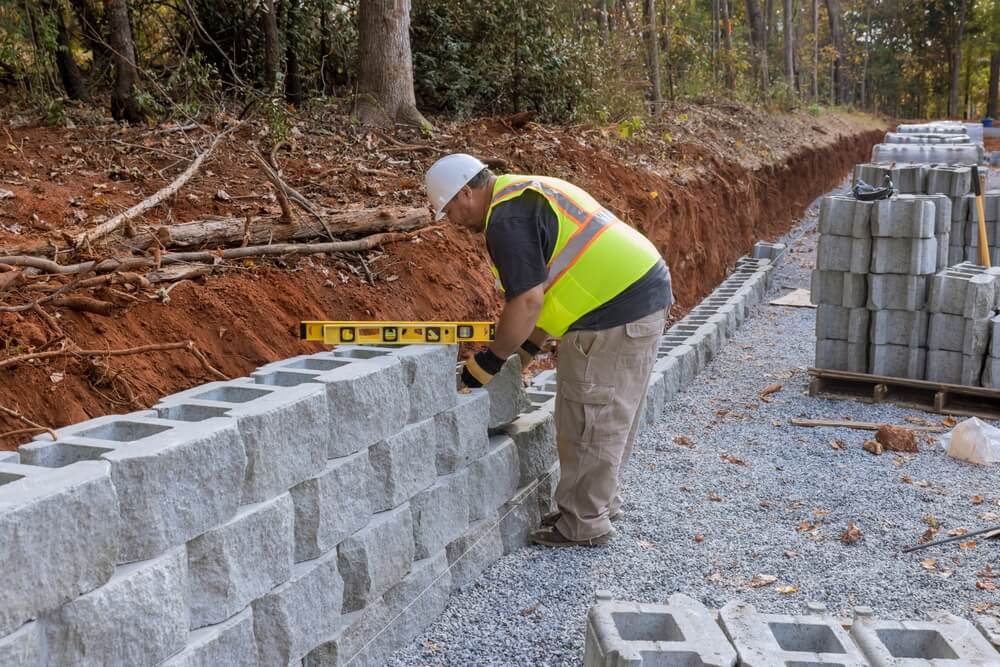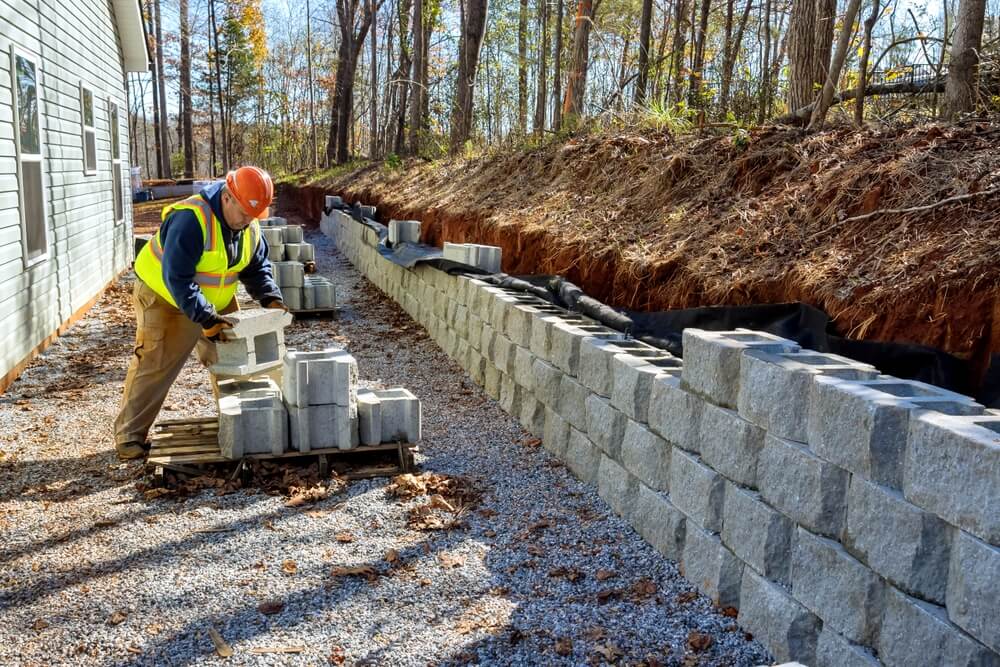
In the world of landscaping and construction, retaining walls have evolved as fundamental elements, serving both functional and aesthetic purposes. From holding back soil on a slope to creating terraced levels for gardens, they have diverse applications. However, constructing one is not as simple as stacking stones or blocks.
Several vital considerations come into play to ensure that the wall stands the test of time and fulfills its intended purpose. Let’s delve deep into the intricacies of erecting a durable and visually appealing retaining wall.
The Purpose Behind Your Wall
Before you start collecting materials or drafting designs, it’s pivotal to define the primary goal of your wall.
Erosion Control
For properties on a slope, retaining walls act as barriers, preventing soil from washing away during heavy rains. If this is your primary concern, you’ll need to consider additional drainage solutions as well.
Creating Usable Space
In hilly terrains, a wall can help carve out flat areas for gardens, patios, or even parking. The design would focus more on the height and strength of the wall in such cases.
Aesthetic Appeal
For some, a retaining structure is primarily decorative, serving as a backdrop for plant beds or as an architectural feature. Material choice and finishing would be paramount here.
Materials Matter
The choice of materials can greatly influence the longevity, strength, and appearance of your wall.
Natural Stone
Offering a classic, timeless look, natural stone can be more labor-intensive and costly but offers unmatched aesthetic versatility. Moreover, its natural variance ensures that no two walls will ever look exactly alike, adding to the uniqueness of your space.
Concrete Blocks
These are durable and relatively easy to install. Modern concrete blocks come in various finishes, mimicking the look of stone or brick. Additionally, their uniform size and shape allow for a more predictable and streamlined construction process.
Timber
Though not as long-lasting as stone or concrete, timber offers a warm, natural look. It’s crucial to choose types that resist rot and pests. Properly treated and maintained timber can provide a rustic charm that complements many garden landscapes.
Soil Type and Drainage
Different soils have varied bearing capacities. While sandy soils offer better drainage, clayey soils retain moisture and can exert more pressure on the wall.
Meanwhile, poor drainage can jeopardize the integrity of the wall. Incorporating gravel backfill, drainage tiles, or weep holes can prevent water buildup behind the structure.
Wall Height and Local Regulations
Determining Wall Height
The higher the wall, the greater the pressure it needs to withstand. For taller walls, it’s advisable to consult with an engineer or expert to ensure stability.
Adhering to Local Codes
Many municipalities have regulations governing the construction of retaining walls, especially those beyond a certain height. It’s essential to check local codes and possibly obtain a permit before starting the project.
The Value of Experience
Building a wall that lasts requires knowledge of foundational principles, material handling, and construction best practices. An experienced contractor can preempt potential pitfalls and deliver a product that combines form and function.
Moreover, inadequately built walls can collapse, leading to injuries and property damage. Engaging professionals ensures that safety standards are met during both construction and the wall’s lifespan.
Budget and Future Maintenance
Estimating Costs
From material expenses to labor charges, it’s essential to factor in all potential costs. Remember, opting for cheaper materials might lead to higher maintenance costs in the long run.
Planning for Upkeep
While a well-constructed wall will require minimal intervention, periodic checks for signs of wear, erosion, or damage can prolong its life.
Get Expert Advice About Your Retaining Wall Today

Building a retaining structure is more than just erecting a barrier; it’s about enhancing and protecting your property. By giving due consideration to the factors mentioned above, you can ensure that your wall not only serves its immediate purpose but also stands as a testament to quality workmanship for years to come.
Whether you’re preventing soil erosion or crafting a terraced garden, make sure your wall is built on a foundation of knowledge, expertise, and careful planning. Contact Natural Environments Corporation today to learn more about factors to consider when building a retaining wall.
